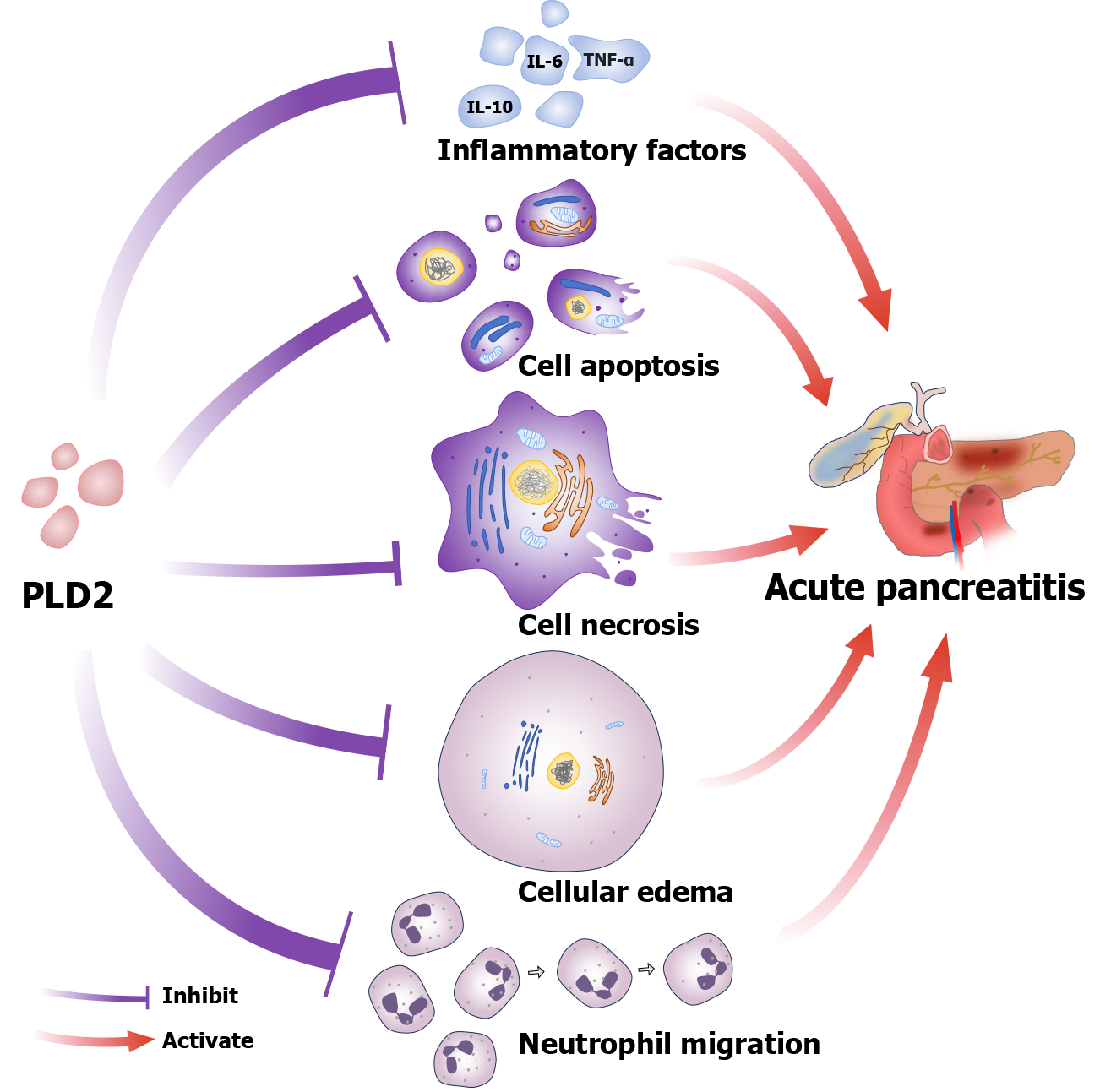Copyright
©The Author(s) 2025.
World J Gastroenterol. Mar 21, 2025; 31(11): 104033
Published online Mar 21, 2025. doi: 10.3748/wjg.v31.i11.104033
Published online Mar 21, 2025. doi: 10.3748/wjg.v31.i11.104033
Figure 1 Phospholipase D2 primarily regulates acute pancreatitis by modulating the production of inflammatory factor, apoptosis and necrosis, cellular edema, and neutrophil migration.
Phospholipase D2 (PLD2) plays a critical regulatory role in acute pancreatitis (AP), influencing key pathological processes and serving as a potential biomarker for disease severity stratification. This figure illustrates how PLD2 modulates AP progression, as highlighted in recent studies. Decreased PLD2 expression is associated with increased neutrophil chemotaxis, enhanced cytokine release, and systemic inflammation, thereby exacerbating AP severity. Moreover, PLD2 regulates pancreatic cell apoptosis, edema, and necrosis via the Nrf2/nuclear factor-κB (NF-κB) pathway. Specifically, PLD2 inhibits the activation of the NF-κB inflammatory pathway, reducing the production of pro-inflammatory factors such as tumor necrosis factor-α and interleukin-6, which alleviates inflammatory responses. These mechanisms collectively contribute to the pathology of acute pancreatitis. Understanding the molecular and temporal dynamics of PLD2 provides valuable insights into its potential as a diagnostic tool, prognostic indicator, and therapeutic target for improving AP management. PLD2: Phospholipase D2; TNF-α: Tumor necrosis factor-α; IL: Interleukin.
- Citation: Wang ZH, Lv JH, Teng Y, Michael N, Zhao YF, Xia M, Wang B. Phospholipase D2: A biomarker for stratifying disease severity in acute pancreatitis? World J Gastroenterol 2025; 31(11): 104033
- URL: https://www.wjgnet.com/1007-9327/full/v31/i11/104033.htm
- DOI: https://dx.doi.org/10.3748/wjg.v31.i11.104033









